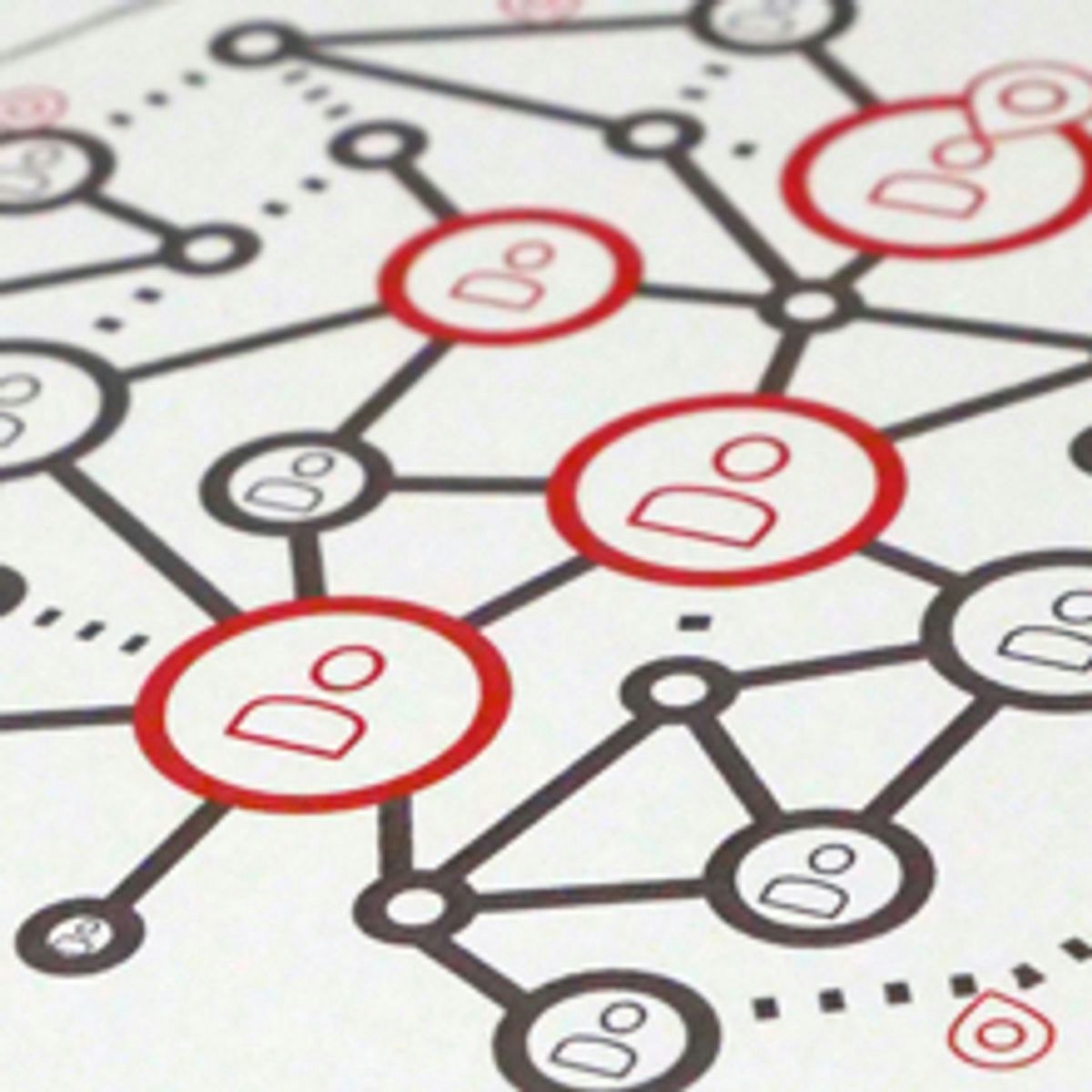Technology Integration
vigating the Landscape of Technology Integration
Technology integration refers to the strategic and purposeful use of technology tools and resources to enhance and support processes and goals within various environments. This isn't just about having the latest gadgets or software; it's about ensuring these tools work together harmoniously, amplifying each other's strengths to achieve specific outcomes. In essence, it is the blending of different technological systems so they function as one cohesive unit. Technology integration is relevant across numerous sectors, including education, business, and healthcare, where it can drive efficiency, innovation, and improved experiences.
Working in technology integration can be an engaging and exciting field. One of the most compelling aspects is the opportunity to be at forefront of innovation, helping organizations and individuals leverage technology to solve complex problems and achieve their objectives. Professionals in this field often find themselves working on diverse projects, collaborating with different teams, and constantly learning about new tools and approaches. The ability to see tangible improvements—whether it's a streamlined business process, a more engaging classroom, or more efficient healthcare delivery—can be incredibly rewarding.
This article will explore the multifaceted world of technology integration. We will delve into its core concepts, examine its application across different domains, and discuss strategies for successful implementation. We will also look at the key technologies involved, the benefits and challenges, educational pathways, and career opportunities. Whether you are a student exploring future options, a professional considering a career shift, or simply curious about this dynamic field, our goal is to provide a comprehensive overview to help you understand what technology integration entails and whether it aligns with your aspirations.
Core Concepts and Frameworks
Understanding technology integration begins with grasping the foundational theories and principles that guide its effective implementation. It's more than just using technology; it's about a thoughtful and purposeful application designed to achieve specific goals. Several models and frameworks have been developed to help conceptualize and guide this process, particularly in distinguishing between simple technology use and meaningful, transformative integration.
Guiding Theories and Principles
At its core, effective technology integration is often underpinned by learning theories when applied in educational contexts, or by principles of organizational efficiency and innovation in business settings. For instance, in education, constructivist theories—which emphasize that learners build their own understanding and knowledge of the world through experiencing things and reflecting on those experiences—align well with technology integration that empowers students to explore, create, and collaborate. Technology can provide tools and environments that facilitate this kind of active learning.
In business, principles of systems thinking and process optimization are central. Technology integration aims to break down silos between different operational units, allowing for smoother workflows, better data sharing, and more informed decision-making. The goal is to create a cohesive technological ecosystem that supports the overall strategic objectives of the organization.
Regardless of the domain, a key principle is that technology should serve a clear purpose and add value beyond what could be achieved without it. It's not about adopting technology for technology's sake, but about leveraging its capabilities to enhance existing practices or enable entirely new and better ways of working or learning.
Key Models and Frameworks
Several models offer structured ways to think about and implement technology integration. In the field of education, two prominent models are SAMR and TPACK. The SAMR (Substitution, Augmentation, Modification, Redefinition) model, developed by Dr. Ruben Puentedura, provides a hierarchy for how technology can be used in teaching and learning. Substitution is when technology acts as a direct tool substitute with no functional change. Augmentation is when technology still acts as a direct tool substitute but with functional improvement. Modification allows for significant task redesign, and Redefinition enables the creation of new tasks previously inconceivable. The aim is to move towards modification and redefinition for more transformative uses of technology.
The TPACK (Technological Pedagogical Content Knowledge) framework highlights the interplay between three core components of knowledge: Technology, Pedagogy, and Content. Effective technology integration, according to TPACK, happens at the intersection of these three knowledge areas, where educators understand not just the technology itself, but how to use it effectively to teach specific content in a pedagogically sound way.
In the business world, frameworks often revolve around Enterprise Architecture (EA) and specific methodologies for integrating systems like Customer Relationship Management (CRM) and Enterprise Resource Planning (ERP). These frameworks provide roadmaps for aligning IT infrastructure with business goals, ensuring interoperability between different software applications, and managing the complexities of large-scale integration projects. Concepts like Service-Oriented Architecture (SOA) and microservices have also become influential, promoting modular and flexible approaches to building and connecting enterprise systems.
These courses can help build a foundation for understanding the theoretical underpinnings and models of technology integration, particularly within educational contexts.
Meaningful Integration vs. Simple Use
A crucial distinction to make is between merely using technology and meaningfully integrating it. Simple technology use might involve employing a digital tool for an isolated task without fundamentally changing the process or outcome. For example, using a word processor to type an essay that would have otherwise been handwritten is use, but it might not represent deep integration if the writing process itself, or how the essay is used for learning, remains unchanged.
Meaningful integration, on the other hand, occurs when technology is leveraged to significantly enhance or transform the activity and its outcomes. It involves a thoughtful alignment of the technology with the goals, the context, and the users. In an educational setting, this could mean using collaborative online tools to enable students to co-create projects in ways that foster deeper understanding and teamwork. In a business context, it could involve integrating disparate data systems to provide a holistic view of customer interactions, leading to more personalized service and improved business intelligence.
The key is that technology becomes an integral part of the process, rather than an add-on or a superficial layer. It should empower users to do things differently or more effectively, leading to improved learning, greater efficiency, or new capabilities.
To further explore these concepts, consider these books that delve into the practical and theoretical aspects of integrating technology, especially in educational settings.
Technology Integration Across Domains
Technology integration is not a one-size-fits-all concept; its application and goals vary significantly depending on the specific domain. From transforming classrooms to revolutionizing business operations and enhancing patient care, technology plays a pivotal role in driving progress and innovation across diverse sectors.
Education (K-12 and Higher Ed)
In K-12 education, technology integration aims to create more engaging and personalized learning experiences. This can range from using interactive whiteboards and educational apps to facilitate instruction, to implementing learning management systems (LMS) for organizing coursework and communication. Project-based learning incorporating technology allows students to create media like podcasts or videos, and collaborative online tools like Google Docs enable real-time teamwork. Digital simulations and gamified learning tools can make complex concepts more accessible and enjoyable. The goal is often to foster digital literacy, critical thinking, and skills necessary for the 21st century.
Higher education institutions also leverage technology extensively. Online learning platforms have become commonplace, offering flexible access to courses and degree programs. Research is enhanced through access to vast digital libraries and data analysis tools. Universities also use sophisticated systems for student administration, resource management, and alumni engagement. The integration of technology in higher education often focuses on expanding access, improving the quality of instruction and research, and preparing graduates for a technologically advanced workforce.
These courses offer insights into applying technology effectively in educational settings.
For further reading on educational technology, these books are highly recommended.
You may also wish to explore these related topics.
Business
In the business sector, technology integration is crucial for maintaining competitiveness, improving efficiency, and driving innovation. A key area is process automation, where technologies like Robotic Process Automation (RPA) and Artificial Intelligence (AI) are used to streamline repetitive tasks, reducing costs and freeing up human employees for more strategic work. For example, RPA can automate data entry or invoice processing.
The integration of Customer Relationship Management (CRM) and Enterprise Resource Planning (ERP) systems is another vital aspect. CRM systems help manage customer interactions and data, while ERP systems consolidate various business processes like finance, human resources, and supply chain management into a unified platform. Integrating these systems provides a holistic view of the business, enabling better decision-making and more personalized customer experiences. Data analytics plays a huge role here, with businesses leveraging integrated data to gain insights into market trends, customer behavior, and operational performance.
These courses provide an understanding of how technology is integrated into business operations and supply chains.
Healthcare
Technology integration in healthcare is revolutionizing patient care, medical administration, and research. Electronic Health Record (EHR) systems are a cornerstone, providing digital versions of patient charts that improve accessibility and reduce medical errors. EHR integration allows different healthcare systems to communicate seamlessly, ensuring that providers have comprehensive and up-to-date patient information.
Telemedicine, or telehealth, has seen significant growth, using technology to provide healthcare services remotely. This is particularly impactful for patients in rural areas or those with mobility issues. Integrating telehealth platforms with EHR systems ensures that remote consultations are informed by complete patient histories. Furthermore, advanced diagnostic tools, often incorporating AI, are improving the speed and accuracy of diagnoses, while surgical robots can enhance the precision of medical procedures.
These courses explore the application of technology in healthcare, including telehealth.
Other Sectors
Beyond education, business, and healthcare, technology integration is making significant inroads in various other sectors. In government, it's used to improve public services, enhance transparency, and manage civic infrastructure (e.g., smart city initiatives). [bgv3lb] Manufacturing relies heavily on integrated technologies for automation, supply chain optimization, and quality control, often referred to as Industry 4.0. Non-profit organizations utilize technology for fundraising, volunteer management, and delivering services more effectively to their target communities. In each of these areas, the drivers for integration often include the pursuit of greater efficiency, improved service delivery, better data management, and the ability to innovate and adapt to changing needs.
Strategies for Successful Implementation
Successfully implementing technology integration projects requires careful planning, strong leadership, and a focus on managing the human aspects of change. It's not just about installing new software or hardware; it's about fundamentally changing how people work or learn. A structured approach, encompassing planning, execution, and evaluation, is crucial for achieving the desired outcomes and minimizing disruptions.
Key Phases: Planning, Execution, Evaluation
The planning phase is foundational. It begins with a clear identification of needs and goals. What problems are we trying to solve, or what opportunities are we trying to capitalize on with this technology integration? This involves a thorough assessment of the current environment, including existing technologies, workflows, and user skills. Objectives should be clearly defined and measurable. Part of this phase also includes selecting the appropriate technologies and partners, considering factors like compatibility, scalability, and cost.
The execution phase involves the actual implementation of the technology. This might be a phased rollout to manage risk and allow for adjustments. Clear communication with all stakeholders is vital during this stage. Project management methodologies are employed to keep the project on track, within budget, and to manage any issues that arise. This is also when training and support for users are typically delivered.
The evaluation phase occurs after implementation but should be an ongoing process. It involves assessing whether the integration has met its defined objectives. This can be done through various methods, including collecting user feedback, analyzing performance data, and measuring the return on investment (ROI). The insights gained from evaluation are then used to make revisions and improvements, ensuring that the technology integration continues to deliver value over time.
Leadership, Vision, and Stakeholder Buy-in
Strong leadership and a clear vision are paramount for any successful technology integration initiative. Leaders must champion the change, articulate the benefits, and create a sense of urgency and commitment throughout the organization. They need to ensure that the integration efforts are aligned with the overall strategic goals of the institution or company.
Stakeholder buy-in is equally critical. This involves engaging all those who will be affected by the changes—employees, teachers, students, managers—from the early stages. Understanding their concerns, incorporating their feedback, and clearly communicating how the changes will benefit them can significantly reduce resistance and foster a sense of ownership. Without this buy-in, even the most technically sound integration can fail to achieve its full potential.
This book offers insights into leadership which is a crucial component of successful technology integration.
Change Management and Adoption
Technology integration inevitably involves change, and managing this change effectively is a key determinant of success. Change management strategies aim to address the human side of technological transitions. This includes acknowledging potential resistance, which can stem from fear of the unknown, concerns about job security, or discomfort with new ways of working.
Effective change management involves clear and consistent communication about the reasons for the change, the expected benefits, and the support available to help people adapt. Providing comprehensive training is essential to ensure that users feel confident and competent with the new technologies. Ongoing support and resources, such as help desks or user communities, can also facilitate adoption. Celebrating early wins and highlighting the positive impacts of the integration can help build momentum and encourage broader acceptance. According to Gartner, addressing the human aspect of change is often the biggest hurdle in digital initiatives.
Training, Support, and Resource Allocation
Adequate training is not a one-time event but an ongoing process. As technology evolves and new features are introduced, users will need continuous learning opportunities. Training should be tailored to the specific needs of different user groups and should focus not just on how to use the technology, but on how to use it effectively to achieve their goals.
Ongoing support is also crucial. Users need to know where to turn when they encounter problems or have questions. This might involve dedicated IT support staff, online help resources, peer support networks, or vendor support. Without adequate support, users can become frustrated and disengaged, hindering the adoption and effectiveness of the integrated technology.
Finally, successful technology integration requires sufficient resource allocation. This includes not only the initial investment in hardware, software, and implementation services but also ongoing costs for maintenance, upgrades, training, and support. Underestimating these long-term resource needs can jeopardize the sustainability and success of the integration effort.
Evaluating Effectiveness and Impact
Evaluating the effectiveness of technology integration is essential to understand its impact and identify areas for improvement. This process should be guided by the objectives defined during the planning phase. Key questions to ask include: Are we achieving the intended outcomes? Is the technology enhancing efficiency, improving learning, or providing a competitive advantage?
Multiple methods can be used for evaluation. Quantitative data, such as performance metrics, cost savings, or student achievement scores, can provide objective measures of impact. Qualitative data, gathered through user surveys, interviews, focus groups, and classroom observations, can offer deeper insights into user experiences, satisfaction levels, and any unintended consequences. It's important to consider a range of factors, including the learning environment, teacher and student proficiency, and pedagogical approaches when evaluating impact in educational settings.
Challenges in evaluation include isolating the impact of technology from other variables and the rapid pace of technological change. However, a commitment to ongoing assessment and a willingness to adapt based on the findings are crucial for maximizing the benefits of technology integration.
Key Technologies and Tools
The landscape of technology integration is populated by a diverse array of technologies and tools. These range from foundational infrastructure components to sophisticated software applications. Understanding the common categories of these technologies and the criteria for selecting them is essential for anyone involved in planning or implementing integration projects.
Common Categories of Integrated Technologies
Several categories of technology are frequently at the heart of integration efforts. Cloud Computing provides scalable, on-demand access to computing resources, storage, and applications, forming the backbone for many modern integrated systems. It offers flexibility and can reduce the need for extensive on-premises IT infrastructure.
Artificial Intelligence (AI) and Machine Learning (ML) are increasingly being integrated to automate complex tasks, provide intelligent insights from data, and personalize user experiences. Examples include AI-powered analytics, chatbots for customer service, and adaptive learning systems in education.
The Internet of Things (IoT) involves networks of physical devices embedded with sensors, software, and connectivity, allowing them to collect and exchange data. IoT integration is transforming industries like manufacturing (smart factories), healthcare (remote patient monitoring), and urban planning (smart cities). [14, bgv3lb]
Big Data Analytics tools and platforms are crucial for processing and analyzing the vast amounts of data generated by integrated systems. These technologies help organizations extract meaningful insights to inform decision-making and identify trends.
Communication and Collaboration Platforms, such as video conferencing tools, instant messaging apps, and shared workspaces, are essential for connecting people and facilitating teamwork, especially in distributed environments. [1, wk64zq, 39]
Examples of Software and Hardware Tools
While specific product names can quickly become dated in the fast-evolving tech landscape, understanding the types of tools is more enduring. In business, common integration tools include Enterprise Service Buses (ESBs) and Integration Platform as a Service (iPaaS) solutions, which help connect disparate applications. CRM software (like Salesforce) and ERP systems (from vendors like SAP or Oracle) are themselves major platforms that often need to be integrated with other business applications.
In education, Learning Management Systems (LMS) such as Canvas, Blackboard, or Moodle are central integration hubs. [ptlc0z] Student Information Systems (SIS) manage student data. Classroom technologies can include interactive whiteboards, document cameras, and student response systems. Various educational software applications for specific subjects or skills are also widely used.
Hardware can range from servers and networking equipment to end-user devices like computers, tablets, and smartphones. Specialized hardware, such as medical diagnostic equipment in healthcare or industrial sensors in manufacturing, also plays a critical role in domain-specific integrations.
These courses offer insights into specific technologies and platforms often involved in integration efforts, particularly focusing on communication and digital transformation.
Criteria for Selecting Appropriate Technologies
Choosing the right technologies is a critical step in any integration project. Several criteria should guide this selection process. Alignment with Goals is paramount: the chosen technology must directly support the objectives of the integration. If the goal is to improve collaboration, a tool that primarily focuses on individual productivity might not be the best fit.
Scalability and Flexibility are important for future-proofing. The technology should be able to accommodate growth in users, data volume, or functionality. It should also be adaptable to changing business or educational needs.
Interoperability and Compatibility with existing systems are key to smooth integration. Will the new technology work well with the tools and platforms already in place? What level of effort will be required to connect them?
User-Friendliness and Accessibility impact adoption rates. Technology that is intuitive and easy to use is more likely to be embraced by users. It should also be accessible to individuals with diverse needs and abilities.
Security and Compliance are non-negotiable, especially when dealing with sensitive data in sectors like healthcare or finance. The technology must meet relevant security standards and regulatory requirements. Finally, Cost-Effectiveness, including initial purchase price, implementation costs, and ongoing maintenance and support, must be considered in relation to the expected benefits.
Role of Interoperability Standards and APIs
Interoperability, the ability of different information systems, devices, and applications to access, exchange, integrate, and cooperatively use data in a coordinated manner, is fundamental to successful technology integration. Without interoperability, systems remain siloed, hindering data flow and collaboration.
Interoperability standards provide common guidelines and specifications that enable different systems to "talk" to each other. In healthcare, for example, standards like HL7 (Health Level Seven) and FHIR (Fast Healthcare Interoperability Resources) facilitate the exchange of clinical and administrative data between software applications from different vendors. Similar standards exist in other industries to promote seamless data sharing.
Application Programming Interfaces (APIs) are another critical enabler of integration. An API is a set of rules and protocols that allows one software application to interact with and request services from another. APIs act as messengers, taking requests from one system, telling another system what to do, and then returning a response. They are essential for building connected ecosystems of applications and are a cornerstone of modern software development and integration strategies, enabling everything from embedding a map on a website to connecting complex enterprise systems.
Understanding these key technologies, selection criteria, and the importance of interoperability provides a solid foundation for navigating the technical aspects of technology integration.
Benefits and Challenges
Technology integration, while offering transformative potential, comes with its own set of advantages and obstacles. A balanced understanding of both is crucial for making informed decisions, planning effectively, and navigating the complexities of implementation. Organizations and individuals looking to leverage technology must weigh the significant upsides against the potential hurdles.
Potential Benefits
One of the most significant benefits of successful technology integration is increased efficiency and productivity. By automating repetitive tasks, streamlining workflows, and improving access to information, organizations can accomplish more with fewer resources. This can lead to considerable cost savings and faster turnaround times.
Technology integration can lead to improved outcomes. In education, this might mean enhanced student engagement and learning achievements. In healthcare, it can translate to more accurate diagnoses, better patient care, and improved health outcomes. In business, it can result in higher quality products or services and better decision-making based on data-driven insights.
Fostering innovation is another key advantage. Integrated systems can provide new capabilities and enable new ways of working, learning, or delivering services. This can give organizations a competitive advantage in their respective fields.
An enhanced user experience is also a common goal and benefit. For customers, this could mean more personalized service and easier access to information. For employees or students, it could mean more intuitive tools and a less fragmented digital environment. Moreover, integration can facilitate better communication and collaboration within and between teams.
Common Challenges
Despite the compelling benefits, integrating technology is not without its challenges. High costs are often a primary concern. This includes not only the initial investment in hardware, software, and implementation services but also ongoing expenses for maintenance, upgrades, training, and support.
Implementation difficulties are common. Integrating complex systems can be technically challenging and time-consuming. Ensuring interoperability between new and existing technologies, migrating data, and customizing solutions to fit specific needs can all present significant hurdles.
Resistance to change from users is a major obstacle. People may be comfortable with existing processes and tools, and may be wary of learning new systems or fear that technology will make their roles obsolete. Overcoming this resistance requires effective change management, clear communication, and robust training and support.
Security risks and data privacy concerns are increasingly prominent. Integrated systems often handle sensitive information, making them attractive targets for cyberattacks. Ensuring robust security measures and complying with data privacy regulations (like GDPR or HIPAA) is critical and can add complexity to integration projects.
The challenge of measuring ROI and impact can also be significant. It can be difficult to quantify the benefits of technology integration, especially intangible ones like improved user satisfaction or enhanced innovation. Developing clear metrics and a framework for evaluation from the outset is important.
Finally, there's the potential for technology integration to exacerbate inequalities, often referred to as the digital divide. If access to technology or the skills to use it are not equitably distributed, some groups may be left behind, widening existing gaps in education, employment, or access to services.
These books delve into the complexities, including the benefits and challenges, of incorporating technology, particularly in educational settings.
Formal Education Pathways for Technology Integration
For those aspiring to build a career in technology integration, a strong educational foundation is often a key stepping stone. Formal education pathways, from undergraduate degrees to specialized graduate programs, can provide the necessary knowledge, skills, and credentials. These programs often cover a blend of technical expertise, domain-specific knowledge (e.g., education, business, healthcare), and project management capabilities.
Relevant Undergraduate Degrees
Several undergraduate degrees can pave the way for a career in technology integration. A Bachelor's degree in Information Systems or Management Information Systems (MIS) is a common choice, as these programs typically focus on how technology can be used to solve business problems and improve organizational processes. They often cover topics like systems analysis and design, database management, networking, and IT project management.
For those interested in the educational sector, a degree in Educational Technology or Instructional Technology can be highly relevant. These programs focus on the theory and practice of designing, developing, implementing, and evaluating technology-enhanced learning experiences.
A Bachelor's degree in Computer Science provides a strong technical foundation in software development, algorithms, and data structures, which can be invaluable for roles involving complex system integrations or software customization. Similarly, degrees in Software Engineering focus on the systematic design and development of software systems.
In the business domain, a degree in Business Analytics can be beneficial, as it emphasizes the use of data and statistical methods to inform business decisions, a key aspect of many integration projects. Depending on the industry, degrees in specific engineering disciplines (e.g., Industrial Engineering for manufacturing integration) or health informatics (for healthcare integration) can also provide relevant expertise.
Relevant Graduate Programs
For those seeking more specialized knowledge or leadership roles, graduate programs offer advanced study in technology integration and related fields. A Master's degree in areas like Information Systems, Educational Technology, Data Science, or Cybersecurity can provide deeper expertise. Some universities offer specialized Master's programs directly focused on Technology Integration or Implementation Science.
An MBA (Master of Business Administration) with a concentration in IT management or technology can be a valuable asset for those aiming for strategic leadership positions in technology integration within business organizations. These programs often combine technical knowledge with management, finance, and strategy coursework.
For individuals interested in research or academic careers, a Ph.D. in fields such as Information Systems, Educational Technology, Human-Computer Interaction, or Computer Science allows for in-depth scholarly investigation into various aspects of technology integration, its impact, and best practices. These programs often involve significant research culminating in a doctoral dissertation.
These courses, while introductory, touch upon foundational skills and concepts that are often expanded upon in formal degree programs related to educational technology and instructional design.
Typical Coursework and Research Areas
Coursework in technology integration-related programs typically covers a range of topics. Technical subjects might include database design and management, network architecture, cloud computing, cybersecurity principles, software development methodologies, and API development. Students will also likely study systems analysis and design, project management, and data analytics.
Domain-specific courses are also common. For example, educational technology programs would include courses on instructional design, learning theories, assessment methods, and the use of specific educational software. Business-focused programs might cover enterprise resource planning (ERP) systems, customer relationship management (CRM) systems, e-commerce technologies, and business process modeling.
Research areas in technology integration are diverse and evolving. They can include investigating the effectiveness of different integration models, studying user adoption of new technologies, exploring the ethical implications of AI and big data, developing new methods for cybersecurity in integrated environments, or examining the impact of technology on organizational change or student learning outcomes.
Pre-University Preparation
High school students interested in pursuing a career in technology integration can take several steps to prepare. Focusing on a strong academic foundation in mathematics and science is beneficial, as is developing strong analytical and problem-solving skills. Taking computer science courses, if available, can provide an early introduction to programming and computational thinking.
Engaging in extracurricular activities related to technology, such as coding clubs, robotics competitions, or tech-focused volunteer work, can also be valuable. Developing strong communication and teamwork skills is equally important, as technology integration professionals often work in collaborative environments and need to communicate complex technical information to diverse audiences. Exploring online resources and introductory courses on platforms like OpenCourser can also provide a taste of the field and help build foundational knowledge.
For those looking to understand the fundamentals of instructional design and technology in education, these books can be excellent starting points, often found in the reading lists of formal programs.
Exploring these topics can provide a broader context for formal studies in technology integration.
Informal Learning and Skill Development
While formal education provides a strong foundation, the rapidly evolving nature of technology means that continuous learning is essential in the field of technology integration. Informal learning avenues, such as online courses, certifications, hands-on projects, and professional communities, play a crucial role in acquiring specific skills, staying current, and facilitating career transitions or advancements.
Online Courses and Certifications
Online courses offer a flexible and accessible way to learn about specific technologies, tools, and methodologies relevant to technology integration. Platforms like OpenCourser aggregate vast catalogs of courses from various providers, covering everything from foundational concepts in cloud computing, AI, and cybersecurity to specialized skills in particular software platforms (e.g., Salesforce, SAP) or programming languages. These courses can be particularly useful for gaining practical, job-ready skills.
Industry-recognized certifications can also enhance your credentials and demonstrate expertise in specific areas. Many technology vendors (e.g., Microsoft, Amazon Web Services, Cisco, Google) offer certification programs for their products and platforms. There are also vendor-neutral certifications in areas like project management (e.g., PMP), cybersecurity (e.g., CISSP), and IT service management (e.g., ITIL) that are highly valued in the field.
Online courses are excellent for building foundational knowledge or diving deep into specific integration technologies. Consider these options to start your journey or supplement your existing skills.
Self-Directed Learning and Online Resources
The internet provides a wealth of resources for self-directed learning. Beyond formal online courses, you can find tutorials, blogs, forums, webinars, and open-source documentation that cover virtually any technology-related topic. Websites dedicated to specific technologies, industry news sites, and professional journals can help you stay updated on the latest trends and developments.
Developing the ability to learn independently is a valuable skill in itself for technology integration professionals. This involves being proactive in identifying knowledge gaps, seeking out relevant information, and applying new learning to practical situations. Setting personal learning goals and dedicating regular time to study and exploration can be very effective.
To support your self-directed learning, these books offer comprehensive insights into various facets of technology in education and learning design.
Hands-on Projects and Portfolio Building
Practical experience is invaluable. Engaging in hands-on projects, whether personal projects, contributions to open-source initiatives, or freelance work, allows you to apply theoretical knowledge and develop problem-solving skills. These projects can also form the basis of a professional portfolio, which is a powerful tool for showcasing your abilities to potential employers or clients.
Your portfolio could include case studies of integration projects you've worked on (even hypothetical ones, if you're starting out), code samples, system architecture diagrams, or demonstrations of your proficiency with specific tools. For those in educational technology, a portfolio might include examples of instructional materials designed, learning modules developed, or evaluations of technology implementations. Clearly articulating the problem, your solution, the technologies used, and the outcomes achieved is key to an effective portfolio piece.
Professional Communities, Workshops, and Conferences
Engaging with professional communities provides opportunities for networking, learning from peers, and staying abreast of industry best practices. Online forums, LinkedIn groups, local meetups, and professional associations related to technology integration, specific industries (e.g., HIMSS for healthcare IT), or particular technologies can be excellent resources.
Attending workshops and conferences offers more structured learning experiences and the chance to hear from experts in the field. These events often feature presentations on new technologies, case studies of successful integrations, and discussions on emerging trends and challenges. They are also prime opportunities for networking and making connections that could lead to job opportunities or collaborations.
For those pivoting into technology integration or seeking to enhance their skills, continuous learning through various channels is key. OpenCourser's Learner's Guide offers valuable tips on how to structure your self-learning journey and make the most of online educational resources.
Career Paths and Roles in Technology Integration
The field of technology integration offers a diverse range of career paths across numerous industries. As organizations increasingly rely on interconnected digital systems, the demand for professionals who can design, implement, and manage these integrations continues to grow. Roles can vary from highly technical positions focused on specific platforms to more strategic roles involving change management and project leadership.
Common Job Titles
Several job titles are commonly associated with technology integration. A Technology Integration Specialist or Integration Specialist typically works on implementing and maintaining integrated systems, ensuring they function smoothly and meet organizational needs. An Implementation Consultant or Integration Consultant often works with external clients, helping them plan and execute technology integration projects, often specializing in particular software (like ERP or CRM systems) or industries.
A Solutions Architect designs the overall structure of technology solutions to meet specific business or technical requirements, including how different systems will integrate. A Change Manager focuses on the people side of technology implementation, developing strategies to help employees adapt to new systems and processes. In the education sector, an Educational Technologist or Instructional Designer works on integrating technology into teaching and learning processes to enhance educational outcomes. [32, t4mq2l, 47qw6y]
Other related roles can include Systems Analyst, Database Administrator, Network Engineer, Cybersecurity Analyst (focused on securing integrated systems), and IT Project Manager.
Exploring these career paths can provide a clearer picture of the roles available.
Typical Responsibilities and Required Skills
Responsibilities in technology integration roles vary widely but often include analyzing current systems and business processes, identifying integration needs and opportunities, and designing and developing integration solutions. This may involve configuring software, developing APIs, managing data migration, and testing integrated systems. Professionals in these roles also provide technical support, troubleshoot issues, create documentation, and train users on new systems.
A blend of technical and soft skills is typically required. Technical skills include proficiency in relevant programming languages (e.g., Python, Java), knowledge of database systems, understanding of networking concepts, experience with specific integration platforms or enterprise software (e.g., MuleSoft, Dell Boomi, SAP, Salesforce), and familiarity with cloud computing platforms (AWS, Azure, Google Cloud). Knowledge of APIs, data mapping, and security protocols is also crucial.
Important soft skills include strong problem-solving and analytical abilities, excellent communication and interpersonal skills (to interact with both technical and non-technical stakeholders), project management capabilities, attention to detail, and the ability to work effectively in teams. Adaptability and a willingness to learn continuously are also vital in this fast-evolving field.
Career Progression Trajectories
Career progression in technology integration can take various forms. An individual might start in a more junior technical role, such as a Junior Integration Developer or Analyst, gaining experience in specific technologies and implementation projects. With experience, they might move into senior technical roles like Senior Integration Specialist or Integration Architect, taking on more complex design and oversight responsibilities.
Alternatively, one might move into project management or team leadership roles, such as IT Project Manager or Integration Team Lead, overseeing integration projects and managing teams of specialists. Some professionals may choose to specialize in a particular industry (e.g., healthcare IT integration, financial systems integration) or a specific technology stack. Others may transition into consulting roles, advising multiple organizations on their integration strategies. With significant experience and a strategic mindset, paths can lead to director-level positions or Chief Technology Officer (CTO) roles, especially in organizations where technology integration is a core part of the business strategy.
This course focuses on a specific area within education but highlights skills relevant to technology integration roles.
Early Career Opportunities
For those starting their careers, internships and entry-level positions provide valuable opportunities to gain practical experience in technology integration. Internships can offer exposure to real-world projects, mentorship from experienced professionals, and a chance to apply academic learning in a professional setting. Many companies offer IT or software development internships that can involve aspects of system integration.
Entry-level roles might include titles like IT Support Specialist, Junior Systems Analyst, or Trainee Integration Developer. These positions often involve providing technical assistance, helping with system testing and documentation, and supporting senior team members on integration projects. Such roles offer a chance to learn the ropes, develop foundational skills, and identify areas of interest for future specialization.
Building a strong resume and portfolio, even with academic or personal projects, can help in securing these early career opportunities. Networking through university career services, professional associations, and online platforms can also uncover openings.
For those considering a career in education, these books offer valuable advice, particularly for new teachers, which can include integrating technology.
Demand Across Industries
The demand for technology integration professionals is robust and spans nearly every industry. As organizations across sectors undergo digital transformation, the need to connect disparate systems, automate processes, and leverage data effectively becomes paramount.
The technology sector itself is a major employer, including software companies, IT consulting firms, and cloud service providers. The finance and banking industry heavily relies on integrated systems for trading, risk management, customer service, and regulatory compliance. Healthcare organizations require integration specialists to manage EHR systems, telehealth platforms, medical devices, and billing systems.
Manufacturing companies use integrated technologies for smart factories, supply chain management, and product lifecycle management. The retail and e-commerce sector depends on integrated systems for online sales, inventory management, customer relationship management, and logistics. Education institutions need professionals to integrate learning technologies, student information systems, and administrative platforms. Even government agencies and non-profit organizations are increasingly seeking expertise in technology integration to improve services and operational efficiency. According to the U.S. Bureau of Labor Statistics, employment for roles like Computer and Information Systems Managers is projected to grow much faster than the average for all occupations, and roles like Instructional Coordinators (which can include educational technologists) also show positive growth projections, indicating a healthy job market.
Ethical Considerations and Societal Impact
As technology becomes more deeply interwoven into the fabric of our personal and professional lives through integration, it's crucial to consider the ethical dilemmas and societal impacts that arise. While the benefits of streamlined systems and enhanced capabilities are significant, we must also navigate challenges related to privacy, employment, equity, and bias. A responsible approach to technology integration involves proactively addressing these complex issues.
Data Privacy and Security
Integrated systems often centralize and process vast amounts of data, including sensitive personal information. This concentration of data, while enabling powerful analytics and personalized services, also creates significant privacy risks. Unauthorized access, data breaches, or misuse of information can have severe consequences for individuals and organizations. Therefore, robust data security measures, including encryption, access controls, and regular security audits, are paramount in any integration project.
Beyond security, data privacy involves questions about how data is collected, used, and shared. Clear policies regarding data governance, transparency about data practices, and mechanisms for individuals to control their information are essential. Compliance with data protection regulations, such as the General Data Protection Regulation (GDPR) in Europe or the Health Insurance Portability and Accountability Act (HIPAA) in the United States, is a legal and ethical obligation. The design of integrated systems must prioritize privacy from the outset (privacy by design).
Impact on Employment and Workforce Skills
One of the most debated societal impacts of technology integration, particularly automation and AI, is its effect on employment. While technology can create new jobs and augment human capabilities, it also has the potential to automate tasks previously performed by humans, leading to job displacement in certain sectors or roles. Routine, manual, and some cognitive tasks are particularly susceptible to automation.
This transformation necessitates a focus on workforce development and reskilling. As technology takes over certain tasks, demand is likely to increase for roles that require uniquely human skills such as critical thinking, creativity, emotional intelligence, and complex problem-solving. There will also be a need for individuals who can design, build, manage, and maintain these integrated technological systems. Lifelong learning and adaptability will become increasingly important for navigating the evolving job market. Educational institutions and employers have a role to play in providing training and pathways for individuals to acquire these future-ready skills.
This course delves into the evolving educational landscape, which is heavily influenced by technology's impact on workforce skills.
Equity, Accessibility, and the Digital Divide
Technology integration has the potential to either bridge or widen existing societal inequalities. The digital divide refers to the gap between those who have access to modern information and communication technology and those who do not. This divide can exist based on socioeconomic status, geographic location, age, or other demographic factors. If integrated technologies are not designed and implemented with equity in mind, they can exacerbate these disparities, limiting access to education, employment opportunities, healthcare, and essential services for already marginalized groups.
Ensuring accessibility is another critical ethical consideration. Integrated systems and digital content should be designed to be usable by people with diverse abilities, including those with visual, auditory, motor, or cognitive impairments. Adhering to web accessibility standards (like WCAG) and incorporating universal design principles can help create more inclusive technological environments. Efforts to improve digital literacy and provide affordable access to technology and internet connectivity are also vital for promoting equity.
Environmental Impact
The widespread adoption and integration of technology also have environmental consequences. The manufacturing of electronic devices consumes significant resources and energy. The operation of data centers, which power many integrated cloud services, requires substantial electricity, contributing to carbon emissions. Furthermore, the rapid obsolescence of technology leads to a growing problem of e-waste, which can contain hazardous materials if not disposed of or recycled properly.
A responsible approach to technology integration involves considering these environmental impacts. This can include choosing energy-efficient hardware, optimizing software for lower power consumption, designing products for durability and recyclability, and supporting responsible e-waste management practices. The concept of "Green IT" and sustainable technology choices are becoming increasingly important considerations.
Algorithmic Bias in Integrated AI Systems
As Artificial Intelligence (AI) becomes more deeply embedded in integrated systems—from automated decision-making in business and finance to diagnostic tools in healthcare and personalized learning platforms in education—the issue of algorithmic bias has emerged as a significant ethical concern. AI algorithms are trained on data, and if that data reflects existing societal biases (e.g., related to race, gender, age, or socioeconomic status), the algorithms can perpetuate or even amplify these biases in their outputs and decisions.
For example, biased AI in hiring tools could unfairly disadvantage certain groups of applicants. In healthcare, biased diagnostic algorithms could lead to misdiagnosis or inequitable treatment recommendations. In the justice system, biased risk assessment tools could lead to unfair sentencing. Addressing algorithmic bias requires careful attention to the data used for training AI models, ongoing auditing of algorithmic performance for fairness, transparency in how AI systems make decisions, and diverse teams involved in the development and oversight of these technologies.
This course explores the use of AI in assessment design, a context where algorithmic bias could be a concern.
These books touch upon the broader societal and instructional implications of technology, which intersect with ethical considerations.
Future Trends and Innovations
The field of technology integration is constantly evolving, driven by rapid advancements in computing power, connectivity, and software intelligence. Looking ahead, several key trends and innovations are poised to further shape how technologies are combined and utilized across various domains. These developments promise even more seamless, intelligent, and transformative integrations, but also bring new complexities and considerations.
Increasing Role of Artificial Intelligence and Machine Learning
Artificial Intelligence (AI) and Machine Learning (ML) are already making a significant impact, and their role in technology integration will only continue to grow. We can expect more sophisticated AI-driven automation of complex business processes, going beyond simple task automation to encompass decision-making and adaptive workflows. In education, AI will likely power more personalized learning experiences, intelligent tutoring systems, and automated assessment tools. Healthcare will see AI further enhance diagnostic capabilities, drug discovery, and personalized treatment plans through the integration of diverse patient data. The ability of ML models to learn from data and improve over time will make integrated systems more dynamic and responsive.
These courses touch on innovative approaches and technologies relevant to future integration trends.
Impact of Emerging Technologies
Several emerging technologies hold the potential to revolutionize technology integration. Advanced Internet of Things (IoT) will lead to an even greater proliferation of connected devices, generating massive amounts of data that can be integrated to create smarter environments, from smart cities and intelligent transportation systems to more responsive manufacturing floors and personalized in-home experiences. [14, bgv3lb]
Blockchain technology, known for its decentralized and secure ledger capabilities, could transform how data is shared and trust is established in integrated systems, particularly in areas like supply chain management, digital identity, and secure health record exchange.
While still in its early stages, quantum computing promises to solve complex computational problems currently intractable for classical computers. Its impact on integration could be profound in areas like materials science, drug discovery, financial modeling, and cryptography, enabling new levels of analysis and optimization within integrated systems.
Trends Towards Hyper-automation and Seamless Integration
The concept of hyper-automation represents a move towards automating as many business and IT processes as possible using a combination of tools like RPA, AI, ML, and process mining. This goes beyond automating individual tasks to orchestrating and optimizing end-to-end workflows across an organization. The goal is to create highly efficient, agile, and resilient operations.
There is also a strong trend towards more seamless and invisible integration. Users will increasingly expect technologies to work together effortlessly in the background, without requiring complex configurations or manual interventions. This "invisible" integration will rely on sophisticated APIs, interoperability standards, and intelligent platforms that can dynamically connect and coordinate different applications and services. The user experience will become paramount, with technology fading into the background as it enables tasks and provides information intuitively.
Evolution of Integration Platforms and Tools
To support these increasingly complex and dynamic integration needs, the platforms and tools used for integration will continue to evolve. We are seeing a shift towards more cloud-native integration solutions (Integration Platform as a Service - iPaaS) that offer greater scalability, flexibility, and ease of use. These platforms are incorporating more AI/ML capabilities to automate aspects of the integration process itself, such as data mapping and API generation.
Low-code and no-code integration platforms are also gaining traction, empowering non-technical users (or "citizen integrators") to build and manage simple integrations, freeing up specialized IT resources for more complex tasks. The focus will be on tools that accelerate the development and deployment of integrations while ensuring robustness, security, and manageability.
This course, while foundational, hints at the evolving nature of technology and its application.
Growing Importance of Sustainability in Technology Choices
As awareness of environmental challenges grows, sustainability is becoming an increasingly important factor in technology choices and integration strategies. Organizations are looking for ways to reduce the energy consumption of their IT infrastructure, minimize e-waste, and choose vendors with strong environmental commitments. This includes considering the energy efficiency of data centers, the lifecycle management of hardware, and the carbon footprint of cloud services.
Future integration projects will likely place a greater emphasis on "Green IT" principles, ensuring that technological advancements are pursued in a way that is environmentally responsible. This may involve designing more energy-efficient systems, leveraging technologies to optimize resource use in other sectors (e.g., smart grids, precision agriculture), and promoting a circular economy for electronic devices.
For those interested in the future of technology and its impact, these books offer thought-provoking perspectives.
The OpenCourser Technology category page is a great place to discover courses on emerging technologies and future trends.
Frequently Asked Questions (FAQs)
Navigating the world of technology integration can bring up many questions, especially for those considering a career in this dynamic field. Here are answers to some frequently asked questions that can help provide clarity and guidance.
What kind of background is best for a career in technology integration?
A diverse range of backgrounds can lead to a successful career in technology integration. While a technical background in computer science, information systems, or software engineering is common and provides a strong foundation, it's not the only path. Individuals with degrees in business, education, healthcare, or other domain-specific areas who also possess strong analytical and problem-solving skills, coupled with a knack for technology, can also thrive. Increasingly, employers value a combination of technical aptitude and industry-specific knowledge. Strong communication and project management skills are also highly sought after regardless of your primary degree.
Is a technical degree necessary to work in technology integration?
While a technical degree is often beneficial, particularly for highly specialized or development-focused roles, it's not always a strict necessity for all positions in technology integration. Roles in areas like change management, project coordination, business analysis for technology projects, or even some consulting positions may prioritize strong communication, organizational, and analytical skills alongside a good understanding of how technology can be applied, rather than deep coding expertise. Many individuals successfully transition into technology integration roles from non-technical backgrounds by acquiring relevant skills through online courses, certifications, and hands-on experience. However, a fundamental understanding of technology concepts will always be an asset.
What are the typical starting salaries or salary ranges in this field?
Salaries in technology integration can vary significantly based on factors such as geographic location, industry, years of experience, specific skills, and the nature of the role. Entry-level positions might start in the range of $50,000 to $70,000 annually in the United States, but this is a broad estimate. For instance, ZipRecruiter data mentioned in one source suggests an average salary for technology integration specialists around $76,804 annually, while another source indicates an average for assistive technology specialists around $58,419. With experience and specialization, salaries can increase substantially, with senior roles, architects, and experienced consultants often earning well into six figures. It's advisable to research salary benchmarks for specific roles and locations using resources like the U.S. Bureau of Labor Statistics or reputable salary websites.
How much programming knowledge is required?
The amount of programming knowledge required depends heavily on the specific role. For a Technology Integration Developer or a Solutions Architect involved in custom API development, strong programming skills in languages like Python, Java, C#, or JavaScript are often essential. However, for roles like a Technology Integration Specialist focused on configuring off-the-shelf software, a Project Manager overseeing integration projects, or an Educational Technologist helping teachers use existing tools, deep programming expertise might be less critical. In these cases, understanding scripting, data formats (like JSON or XML), and how APIs work at a conceptual level might be sufficient. Many modern integration platforms also offer low-code or no-code capabilities, reducing the need for extensive programming for certain tasks.
Are technology integration skills transferable across industries?
Yes, many core technology integration skills are highly transferable across industries. The fundamental principles of systems analysis, data management, project management, change management, and understanding how to connect disparate technologies are applicable whether you're working in finance, healthcare, education, or manufacturing. While domain-specific knowledge is often important and can make a candidate more attractive for certain roles (e.g., understanding healthcare regulations for EHR integration), the underlying technical and problem-solving skills have broad applicability. This transferability offers professionals in the field a good degree of career flexibility.
What is the long-term career outlook for technology integration specialists?
The long-term career outlook for technology integration specialists and related roles is generally very positive. As organizations continue their digital transformation journeys, the need to integrate new and existing technologies, manage data effectively, and automate processes will only increase. Fields like AI, IoT, cloud computing, and big data are all driving demand for skilled integration professionals. According to the U.S. Bureau of Labor Statistics, job growth for many computer and IT occupations is projected to be much faster than the average for all occupations. The ability to adapt to new technologies and continuously learn will be key to long-term success in this evolving field.
How important is project management experience for these roles?
Project management experience is very important for many roles in technology integration. Most integration initiatives are, in essence, projects with defined goals, timelines, budgets, and stakeholders. Professionals who can effectively plan, execute, monitor, and close these projects are highly valued. Skills in areas like scope management, risk management, stakeholder communication, and team leadership are crucial, even for those in primarily technical roles who may be leading smaller integration tasks or contributing to larger project teams. For those aspiring to leadership positions within technology integration, strong project management capabilities are often a prerequisite.
Can I specialize within technology integration (e.g., specific software, industry)?
Yes, specialization is common and often a good career strategy within technology integration. You might specialize in a particular type of technology, such as cloud integration, AI/ML integration, or cybersecurity for integrated systems. Another common path is to specialize in specific software platforms, becoming an expert in integrating major enterprise systems like Salesforce, SAP, Oracle, or specific Learning Management Systems in education. Industry specialization is also prevalent; for example, becoming a healthcare technology integration specialist requires understanding specific regulations (like HIPAA) and clinical workflows, while financial technology integration has its own set of compliance and security demands. Specialization can lead to deeper expertise and make you a more sought-after candidate in your chosen niche.
If you're looking to explore courses that can help you build a foundation or specialize in areas related to technology integration, OpenCourser's browse page offers a wide variety of options across different subjects and technologies.
Embarking on a path in technology integration can be a challenging yet deeply rewarding endeavor. It's a field that demands continuous learning and adaptation but offers the chance to be at the cutting edge of innovation, solving meaningful problems across a multitude of industries. Whether you are just starting to explore your career options or are considering a pivot, we hope this overview has provided you with a clearer understanding of what technology integration entails and the exciting opportunities it holds. With dedication and the right skills, you can play a vital role in shaping how technology transforms our world.
























